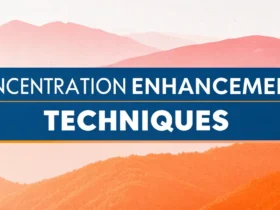Struggling to focus? Does your mind wander after just a few minutes of studying? You’re not alone. Many students face this challenge. But what if there was a simple technique to sharpen your focus and boost your study success?
The pomodoro technique is a time management method designed to improve concentration and productivity. It’s a powerful tool that can help you conquer procrastination and get more done in less time. Sound good?
In this article, you’ll learn everything you need to know to master the pomodoro technique and transform your study habits. Get ready to unlock your full potential!
Pomodoro: What Is It?
The pomodoro technique is a time management system that breaks down work into focused intervals, traditionally 25 minutes in length, separated by short breaks. Each interval is known as a “pomodoro,” derived from the Italian word for “tomato,” after the tomato-shaped kitchen timer Francesco Cirillo, the technique’s developer, used in the 1980s.
This method is based on the idea that frequent breaks can improve mental agility. By working in short, focused bursts, you can maintain concentration and avoid burnout.
The Classic Pomodoro Framework: A Step-by-Step Guide
The basic framework of the pomodoro technique involves these steps:
- Pick a task: Decide what you want to accomplish during your study session. Be specific!
- Set the timer: Set a timer for 25 minutes.
- Focus and work: Work on the task until the timer rings. No distractions!
- Short break: Take a 5-minute break. Step away from your workspace, stretch, or grab a drink.
- Repeat: Repeat steps 2-4 four times.
- Long break: After four pomodoros, take a longer break of 20-30 minutes.
After the long break, you can start the cycle again.
Why Does the Pomodoro Technique Work? The Science Behind It
The effectiveness of the pomodoro technique can be attributed to several psychological principles:
- Time Blocking: The structured nature of the technique helps you allocate specific time slots for particular tasks, reducing the likelihood of multitasking and improving focus.
- Forced Breaks: Regular breaks prevent mental fatigue and allow you to return to your work with renewed concentration. Studies show that short breaks can significantly improve attention spans and cognitive performance.
- Goal Setting: Clearly defining the task for each pomodoro creates a sense of purpose and direction, making it easier to stay on track.
- Sense of Accomplishment: Completing each pomodoro gives you a sense of achievement, which can boost motivation and make studying more enjoyable.
Benefits of Using the Pomodoro Technique for Study
Implementing the pomodoro technique can yield many benefits for students of all levels:
- Improved Focus and Concentration: Regular breaks help combat mental fatigue and allow you to stay focused on the task at hand.
- Reduced Procrastination: By breaking down large tasks into smaller, manageable chunks, the technique makes it easier to get started and overcome procrastination.
- Enhanced Time Management: The structured framework of the technique helps you track your time and make better use of your study sessions.
- Increased Productivity: By working in focused bursts, you can get more done in less time and achieve your study goals more efficiently.
- Decreased Burnout: Regular breaks prevent mental exhaustion and help you maintain a healthy balance between study and rest.
- Better Motivation: The sense of accomplishment from completing each pomodoro can boost motivation and make studying more enjoyable.
How to Implement the Pomodoro Technique for Studying: A Practical Guide
Ready to give the pomodoro technique a try? Here’s a step-by-step guide to help you get started:
Step 1: Preparation
- Identify your study goals: Before you start, define what you want to achieve during your study session. Break down large tasks into smaller, manageable steps.
- Gather your materials: Have everything you need for your study session within reach, such as textbooks, notes, pens, and a calculator.
- Eliminate distractions: Turn off your phone, close unnecessary tabs on your computer, and find a quiet place to work.
Step 2: The Pomodoro Cycle
- Set the timer: Set a timer for 25 minutes using a kitchen timer, a smartphone app, or an online tool.
- Focus and study: Work on your chosen task with intense focus. Avoid distractions and stay on track.
- Short break: When the timer rings, take a 5-minute break. Get up, stretch, walk around, or do something relaxing.
- Repeat: Repeat steps 2-3 four times.
- Long break: After four pomodoros, take a longer break of 20-30 minutes. Use this time to recharge, relax, and do something you enjoy.
Step 3: Review and Adjust
- Track your progress: Keep a record of how many pomodoros you complete each day and what you accomplish during each session.
- Evaluate your effectiveness: Assess whether the pomodoro technique is working for you. Are you able to stay focused during the 25-minute intervals? Are the breaks helping you recharge?
- Make adjustments: If needed, modify the length of the pomodoros or the breaks to better suit your needs and preferences.
Examples of How to Use Pomodoro for Different Study Tasks
- Reading a textbook: Break down the reading into smaller sections and complete one section per pomodoro.
- Writing an essay: Focus on outlining, researching, writing the introduction, body paragraphs, or conclusion during each pomodoro.
- Solving math problems: Work on a specific set of problems during each pomodoro, taking breaks to review concepts or seek help.
- Memorizing vocabulary: Dedicate each pomodoro to learning a specific number of new words, using flashcards or other memory aids.
- Reviewing notes: Go over your lecture notes, highlighting key points and summarizing important information during each pomodoro.
Adaptations and Variations of the Pomodoro Technique for Different Learning Styles
While the classic pomodoro technique provides a solid framework, it’s important to adapt it to your own learning style and preferences. Here are some variations you can try:
Adjusting the Pomodoro Length
- Longer pomodoros: If you find that 25 minutes is too short, try increasing the interval to 45 or 50 minutes.
- Shorter pomodoros: If you struggle to maintain focus for 25 minutes, try reducing the interval to 15 or 20 minutes.
Modifying Break Times
- Longer breaks: If you need more time to recharge, increase the length of the short breaks to 10 minutes or the long breaks to 45 minutes.
- Active breaks: Instead of simply resting during your breaks, engage in physical activity, such as stretching, walking, or doing light exercises.
Personalizing the Task Management
- Combine small tasks: If you have several small tasks to complete, group them together and work on them during a single pomodoro.
- Break down complex tasks: If you have a large, complex task, break it down into smaller, more manageable subtasks and tackle one subtask per pomodoro.
Incorporating Different Study Methods
- Active recall: Use your breaks to quiz yourself on the material you’ve just studied, testing your memory and understanding.
- Spaced repetition: Review previously learned material at increasing intervals, reinforcing your knowledge over time.
- Feynman technique: Explain the concepts you’re learning in simple terms, as if you were teaching them to someone else.
Using Technology to Enhance the Pomodoro Technique
There are many apps and tools available that can help you implement the pomodoro technique and track your progress:
- Timer apps: Use a simple timer app on your phone or computer to track your pomodoros and breaks.
- Pomodoro apps: Dedicated pomodoro apps offer features such as customizable timers, task lists, progress tracking, and distraction blocking.
- Website blockers: Use website blockers to prevent yourself from visiting distracting websites during your study sessions.
- Note-taking apps: Use note-taking apps to organize your study materials, track your progress, and review your notes during breaks.
- Focus-enhancing apps: Explore apps that offer background noise or ambient sounds to help you concentrate and block out distractions.
Here are some popular pomodoro apps and tools:
- Focus To-Do
- Forest
- Freedom
- Toggl Track
- Marinara Timer
Common Challenges and Solutions When Using the Pomodoro Technique
While the pomodoro technique is a powerful tool, you may encounter some challenges when implementing it. Here are some common issues and how to address them:
- Distractions: It can be tough to avoid distractions, especially in today’s digital world.
- Solution: Minimize distractions by turning off your phone, closing unnecessary tabs on your computer, and finding a quiet place to work.
- Difficulty staying focused: Some people struggle to maintain focus for the entire 25-minute pomodoro.
- Solution: If you find your mind wandering, gently redirect your attention back to the task at hand. Try breaking down the task into even smaller steps or using focus-enhancing techniques such as meditation or deep breathing.
- Interruptions: Unexpected interruptions can disrupt your pomodoro cycle and make it difficult to get back on track.
- Solution: Communicate your study schedule to others and ask them to respect your focused time. If interruptions are unavoidable, try to reschedule your pomodoros or find a quieter place to work.
- Burnout: If you’re not careful, you can experience burnout from studying for long periods of time.
- Solution: Make sure to take regular breaks and incorporate activities you enjoy into your study schedule. Don’t be afraid to adjust the length of your pomodoros or breaks to better suit your needs.
Real-Life Examples of Students Who Have Benefited From the Pomodoro Technique
Many students have found success using the pomodoro technique to improve their study habits and achieve their academic goals. Here are a few real-life examples:
- Sarah, a college student struggling with procrastination: Sarah was overwhelmed by her coursework and constantly put off studying until the last minute. After implementing the pomodoro technique, she was able to break down her assignments into smaller, more manageable tasks, making it easier to get started and stay on track.
- David, a graduate student preparing for exams: David was struggling to focus and retain information while studying for his comprehensive exams. By using the pomodoro technique, he was able to improve his concentration and memory, leading to better exam scores.
- Emily, a high school student juggling multiple extracurricular activities: Emily was having a hard time balancing her schoolwork with her extracurricular commitments. The pomodoro technique helped her manage her time more efficiently, allowing her to stay on top of her studies while still participating in the activities she loved.
- Michael, an online learner seeking more discipline: Michael needed a system to stick to as he took online courses from home. He found that once he made the Pomodoro technique a habit, he was able to study and learn with a new level of consistency.
- Alicia, an adult learner going back to school: Alicia was looking to get the most out of the time she had available to her. She was able to greatly improve her test results by using the Pomodoro method to schedule, organize, and execute her studies.
Beyond Studying: Applying Pomodoro Principles to Other Areas of Life
The pomodoro technique is not just for studying. It can also be applied to other areas of your life where you want to improve focus, productivity, and time management:
- Work: Use the pomodoro technique to tackle work projects, answer emails, or complete administrative tasks.
- Creative pursuits: Apply the technique to writing, painting, composing music, or any other creative activity.
- Household chores: Break down household chores into smaller tasks and complete one task per pomodoro.
- Exercise: Use the pomodoro technique to structure your workouts, alternating between periods of intense activity and short rest breaks.
- Personal projects: Apply the technique to personal projects such as learning a new skill, reading a book, or organizing your finances.
- Habit formation: Use the technique to help you establish new habits, such as meditating, journaling, or practicing gratitude.
- Time spent working in a team: The Pomodoro technique can also be used to structure meetings and help teams get things done in short bursts while still keeping in mind the need for regular breaks.
Is the Pomodoro Technique the Key to Your Study Success?
The pomodoro technique offers a simple yet powerful way to improve focus, productivity, and time management. By breaking down your study sessions into focused intervals, you can combat procrastination, enhance concentration, and achieve your academic goals more efficiently.
Give the pomodoro technique a try. Then find yourself tackling that stack of textbooks with a newfound sense of control and accomplishment. The power to transform your study habits is in your hands—or, more accurately, on your timer!















Leave a Reply
View Comments